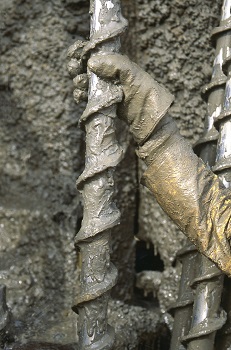The team at Malvern Panalytical’ Houston (Texas, USA) office was delighted to host recent meetings on the 15th May 2013 of two American Petroleum Institute (API) working groups focussed on addressing the critical issue of how best to analyze drilling muds and the mineral components that they consist of.

Specialists from Malvern Panalytical - Dr Steve Ward Smith, Key Account Manager and Jon Layton, Gulf States Account Manager - sit on both groups which are working to enhance and standardize the methods used to characterize both aqueous and oil-based drilling fluids.
Drilling muds or fluids play a critical role in the oil industry. They maintain a safe and effective operation by: removing cuttings from the well; stabilizing and protecting the developing formation; and lubricating, cooling and supporting the drill bit. Closely matching a drilling mud to the geology of a well, and the requirements of the project, is crucial and relies on effective characterization of the product.
API WG4 (Working Group) is looking at the characterization techniques that can be applied to both oil- and water-based muds. This is a long term project, currently at a relatively early stage, that will examine how techniques such as automated imaging and laser diffraction can be usefully applied. It is likely to produce multiple standards over the next few years.
API WG3 has the more closely-defined objective of developing a new standard for the use of laser diffraction to analyze oil-based muds and is currently conducting round-robin tests to identify the impact of different methodologies on the results obtained. This work is expected to lead to a new API standard for the application of laser diffraction in drilling mud analysis some time next year.
About Malvern Panalytical
Malvern Panalytical provides the materials and biophysical characterization technology and expertise that enables scientists and engineers to understand and control the properties of dispersed systems. These systems range from proteins and polymers in solution, particle and nanoparticle suspensions and emulsions, through to sprays and aerosols, industrial bulk powders and high concentration slurries. Used at all stages of research, development and manufacturing, Malvern Panalytical’s materials characterization instruments provide critical information that helps accelerate research and product development, enhance and maintain product quality and optimize process efficiency.
Our products reflect Malvern Panalytical’s drive to exploit the latest technological innovations and our commitment to maximizing the potential of established techniques. They are used by both industry and academia, in sectors ranging from pharmaceuticals and biopharmaceuticals to bulk chemicals, cement, plastics and polymers, energy and the environment.
Malvern Panalytical systems are used to measure particle size, particle shape, zeta potential, protein charge, molecular weight, mass, size and conformation, rheological properties and for chemical identification, advancing the understanding of dispersed systems across many different industries and applications.